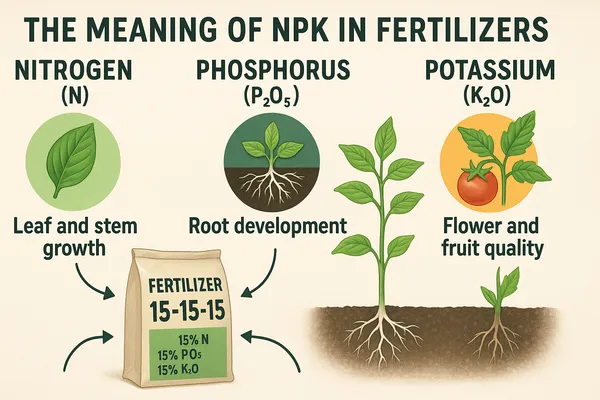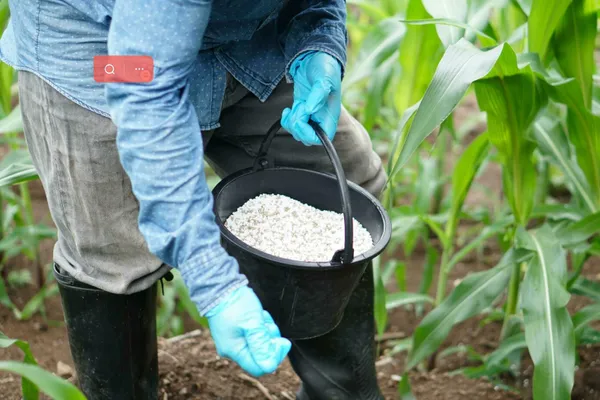Avoid your inquiry is delay response, please enter your WhatsApp/Skype along with the message, so we can contact you at the very first time.
We will reply you within 24 hours. If for urgent case, please add WhatsApp/WeChat:
Warning: Undefined variable $public in /www/wwwroot/lvfertilizer.com/wp-content/themes/hyhadmin/header.php on line 350
Warning: Trying to access array offset on value of type null in /www/wwwroot/lvfertilizer.com/wp-content/themes/hyhadmin/header.php on line 350
,. Or call
Warning: Undefined variable $public in /www/wwwroot/lvfertilizer.com/wp-content/themes/hyhadmin/header.php on line 350
Warning: Trying to access array offset on value of type null in /www/wwwroot/lvfertilizer.com/wp-content/themes/hyhadmin/header.php on line 350
directly.
Many farms struggle with weak yields because the soil lacks balanced nutrient inputs. Confusion over npk fertilizer types makes it worse. Here’s a clear path: understand the npk fertiliser options and choose the right formulation for your crop—without guesswork.
There are several types of NPK fertilizers grouped by how they’re made and used: granular vs liquid NPK, slow-release vs quick-release, balanced NPK (e.g., 10-10-10), high in nitrogen (e.g., 30-10-10), phosphorus-forward (e.g., 10-30-10), potassium-forward (e.g., 12-6-24), synthetic NPK compounds and blends, and organic NPK sources. Farmers select the type of fertilizer by soil test, growth stage, npk ratio, and application method to match nutrient needs.
As a leading manufacturer and exporter of high-quality fertilizer products based in China, we support Agricultural Distributors & Importers, Commercial Farm Owners & Cooperatives, Government & NGO agricultural projects, and Fertilizer Brand Owners (OEM). In this npk fertilizer guide, we explain the different types of NPK, how to read a fertilizer label, and how to pick the right fertilizer for your fields or garden—in plain language.
NPK stands for nitrogen, phosphorus, and potassium—the three essential nutrients most plants require in larger amounts than others. Each number on the bag of fertilizer shows the percentage of these nutrients (by weight). A 15-15-15 fertilizer contains 15% N, 15% P₂O₅, and 15% K₂O. These inputs help plants with plant growth, root development, and flower and fruit quality.
In practice, npk fertilizers can help close the gap between nutrient supply and nutrient requirements for your soil and crop. Because soil types and soil condition vary, two fields side by side may require different blends and fertilizer formulations.
“The numbers don’t lie: match the npk content to the needs of plants, and you protect soil health while lifting productivity.”

What does NPK stand for
There isn’t only one list. You can sort types according to form, release profile, chemistry, npk ratio, and application:
Below we walk through each category and when to use npk.
Granular commercial fertilizer is durable, easy to store, and simple to spread with common equipment. It works well for base applications and broadacre fields used in agriculture worldwide. Many fertilizer products are made as compounds (each granule has N, P, and K) or as blends (different granules for each nutrient).
Liquid NPK shines when uniform coverage or fertigation is needed. It’s easy to meter, mixes well in irrigation, and supports timely feeding during the growing season. For quick correction, liquid can be applied directly to plants as a foliar—always follow label directions before applying any NPK.
Quick guide:
Quick-release inputs deliver nutrients fast—useful when soil tests show sharp deficiencies or when plants at various stages suddenly demand more. The trade-off is timing: supply can outrun uptake if not managed, which wastes nutrients.
Slow-release technologies steadily feed the crop over weeks. That steadier curve lowers burn risk and can reduce application frequency. Farmers often blend both to match plant needs across time and weather.
Bottom line: A fertilizer would be chosen for how it fits your calendar, irrigation, and soil texture—not just what’s cheapest.
Balanced NPK (e.g., 10-10-10 or 15-15-15) suits soils that are generally in range but need maintenance. It’s a good fertilizer for landscapes and a home garden, where a gardener wants simple routine care.
Skewed ratios target specific nutrient gaps:
| NPK Ratio | Typical Use | Notes |
| 10-10-10 (balanced NPK) | General maintenance | Even nutrients for stable soil programs |
| 30-10-10 (high nitrogen) | Early vegetative, leafy greens | Pushes canopy; monitor lodging risk |
| 12-24-12 (High P) | Transplanting, rooting | Supports root development |
| 12-6-24 (High K) | Quality, flower and fruit | Aids firmness, color, storage |
Remember: actual choice depends on soil test and your fertilizer needs.
The fertilizer label lists npk fertilizer ratios and other specs. Those numbers compare nutrient content, not total mass. For example, a 50-kg bag of fertilizer labeled 20-10-10 carries 10 kg N, 5 kg P₂O₅, 5 kg K₂O (the rest is carrier). Different brands and fertilizer formulations vary in density and solubility—check handling and storage instructions.
Also review any micronutrient package (e.g., zinc, boron). Small amounts can make a big difference in crop yields and quality.

Reading the fertilizer label
Synthetic fertilizer (including synthetic NPK) gives precise, predictable nutrient percentages and quick response. It’s consistent and easy to integrate with equipment. Chemical fertilizers are not “bad” by default; the key is correct use.
Organic fertilizer and organic NPK sources (e.g., compost enriched with organic matter) feed soil biology and improve structure over time. They can be lower analysis, so volumes are larger. Many operations use both: fertilizers like urea-based blends for in-season boosts and organic inputs for long-term soil health.
We customize both synthetic and organic blends for OEM brands, so distributors can meet local preferences and regulations.
To choose the right npk fertilizer for your crops, follow this quick flow:
Examples (generalized, not prescriptive):
Starter blends often raise P to push roots and early vigor. During plant growth peaks, nitrogen drives biomass. Later, adjust toward potassium (and some P) to back flower and fruit quality.
This staged approach gives plants the nutrients they need to grow effectively, respecting nutrient use efficiency and local rules. It’s common to use one fertilizer product early and a different fertilizer later.
In broadacre fields, logistics rules: efficient spreading of dry fertilizer, calibrated rigs, and simple blends that are easy to buy and store. In a garden, a gardener may prefer balanced NPK or small-pack liquid NPK for frequent light feeding.
Either way, the same principles guide you—match npk ratio to soil status, crop, and fertilizer type.
Here are common types you’ll see in catalogs:
Fertilizers include straight compounds and blends; fertilizers come in many packages to meet regional rules used in agriculture.
While N-P-K gets the spotlight, micronutrient balance (Zn, B, Fe, etc.) matters for enzymes and physiology. Adding organic matter through cover crops or compost improves water holding and cation exchange, making your base nutrient dollars go further.
We often enrich private-label blends with targeted micronutrient packages—especially in calcareous soil types where zinc or iron can be limiting.
Before apply fertilizer, read the label and follow local guidance. Calibrate spreaders for even coverage; check overlaps. Consider buffers near waterways. Think rate, source, timing, and place.
If you wonder how much fertilizer to use, start with a soil test, crop targets, and consult local extension recommendations. It’s smarter to feed as the plants but also the soil can handle, minimizing losses and safeguarding resources.

how to apply fertilizer wisely
A vegetable grower on loam soil saw uneven canopy and low crop yields. Tests showed moderate phosphorus but low potassium. The team switched from 20-10-10 to 12-6-24 during fruit set, with a small micronutrient package. Over one season, marketable fruit grades improved, and storage losses fell. The lesson: let data guide fertilizer needs and timing.
Distributors and brand owners often request custom formulation—for example, a coated granular 15-7-20 with Zn and B for subtropical orchards—or a water-clear liquid NPK for greenhouse lines. We produce both compound and blended commercial fertilizer, with custom fertilizer formulations to match regional rules and buyer preferences.
If you’re building an OEM line, we can map SKUs by npk content, fertilizer type, and package size to align with seasonality and logistics.
| Category | Examples | Where it fits |
| Form | Granular, Liquid NPK, water-soluble | Broadcast, fertigation, foliar |
| Release | Quick-release, slow-release (coated) | Immediate need vs season-long feed |
| Ratio | Balanced NPK, high nitrogen, high-P, high-K | Maintenance vs targeted response |
| Chemistry | Synthetic NPK, organic NPK | Precision analysis vs organic matter focus |
| Application | Dry fertilizer, banding, fertigation, foliar | Equipment and labor fit |
How do I pick the best NPK fertilizer for my crops?
Start with a soil test and your yield goal. Match the npk ratio and fertilizer type to soil status and growth stage. For maintenance, balanced NPK often works. For targeted needs, pick skewed ratios. If unsure, contact us—we’ll tailor an npk fertilizer for your crops program.
Is liquid better than granular?
Neither is “better” in all cases. Granular is efficient for base feeding. Liquid NPK is ideal for in-season corrections and fertigation. Choose based on equipment, timing, and soil condition.
Can organic and synthetic be used together?
Yes. Blending organic fertilizer inputs for long-term soil health with precise synthetic fertilizer for in-season response is common. It supplies plants the nutrients they need while caring for the soil.
What does the label actually tell me?
It lists npk fertilizer ratios, sources, and sometimes micronutrient content. Use it to compare options, understand npk content, and plan timing. Always read instructions before applying any NPK.
Which is the best NPK fertilizer?
The best NPK fertilizer is the one that meets your nutrient gaps, soil status, and crop targets at the right time. There’s no single best npk for every field.
Can I use the same NPK all season?
You can, but plants at various stages often thrive when the ratio shifts—higher nitrogen early, more phosphorus and potassium near flower and fruit.
(We also draw on factory field trials and distributor feedback from multiple regions; always align with local guidance.)
Selecting the right fertilizer isn’t guesswork. With a soil test, a clear npk ratio target, and the correct fertilizer product form, you can feed plants efficiently and responsibly. As a China-based manufacturer and exporter, we build private-label lines and custom formulation for distributors, cooperatives, and development projects—so you deliver the nutrients your markets want.
Let’s build your program: balanced maintenance blends, high nitrogen starters, high-K quality movers, or turnkey liquid NPK lines. We’ll help you choose the right SKU mix and packaging for your channels.
If you’d like a region-specific matrix for npk fertilizer for your crops, we can share a printable chart aligned with your local standards and distribution calendar.